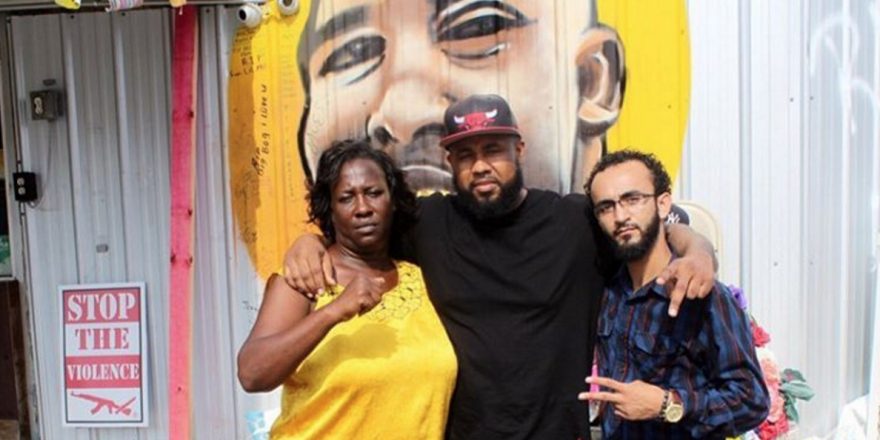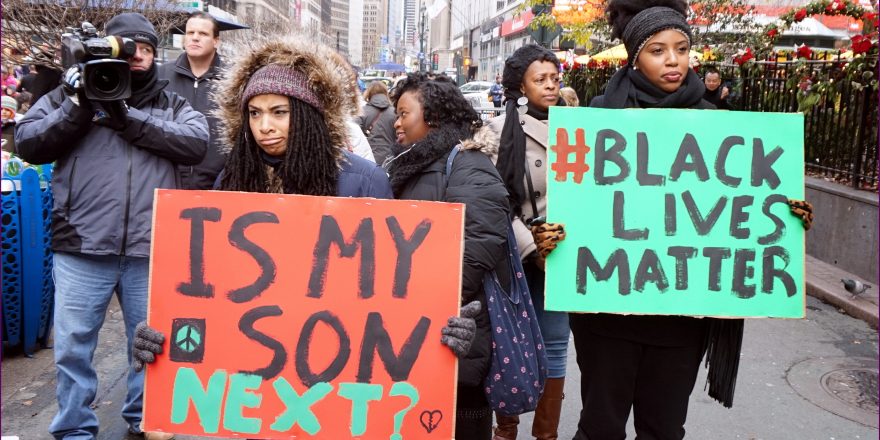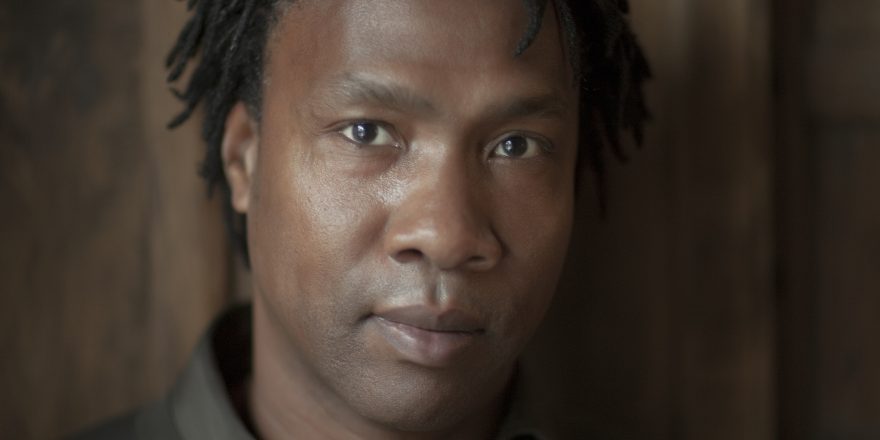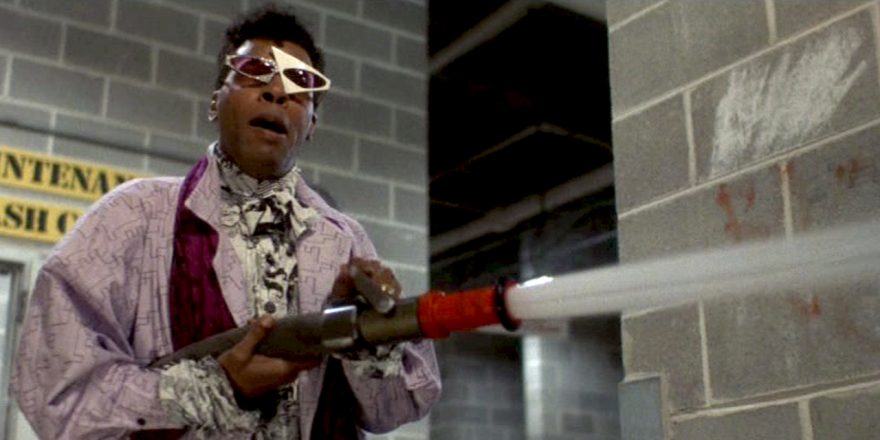To the Documentary Community,
Armed only with camera phones, citizen journalists have shattered America’s myth of racial equality. Instead of garnering Pulitzers and Peabodys, they have been targeted, harassed and arrested by members of the very institution whose abuses they seek to expose.
As filmmakers, we may differ on our definition of “documentary.” But many, if not all of us, harbor a core belief: that images have insurmountable power. Not merely to create change, but to trigger fresh thoughts, to nudge our audiences toward a new seat in the theater of public opinion, one whose vantage point endows them with a more informed and empathetic view.
These citizen journalists have done just that. More so, they have changed the course of our country’s history, dwarfing any impact our own cameras have created. By hurtling these images through the front windshield of public consciousness, they have made it impossible for white Americans to continue ignoring a truth our leaders have spent centuries obfuscating: black lives matter. While our society struggles to absorb this truth, police departments nationwide have maneuvered to asphyxiate the efforts of those whose cameras and courage have revealed it.
For example: on July 5th, Chris LeDay uploaded a video online of Alton Sterling being shot point-blank in the chest by white Baton Rouge police officers. Within hours of posting, the video went viral. Twenty-four hours later, LeDay reported to work at Dobbins Air Reserve Base where he was arrested by nearly a dozen armed military and civilian police officers. They not only handcuffed him, but also placed him in leg-shackles. He was delivered to a local jail, stripped of his clothing, ordered to wear an orange jumpsuit, locked in a cell, and told he’d have to wait seven days before seeing a judge.
The charges? Initially they said he “matched the description” – of what, they declined to say. Then they declared he was wanted on an assault charge. He told them he had never been arrested for assault. Ultimately, after exhausting these attempts at justifying his detention, they said he was being held for unpaid traffic tickets. After 26 hours in police custody, LeDay paid the $1,231 in fines owed and was released.
The individual who filmed Sterling’s death? They chose – wisely, considering LeDay’s fate – to remain anonymous. All we know is that they are a member of the Louisiana-based Stop the Killing Inc., a non-profit that records potentially violent encounters. “We see a great injustice, and we wanted it to be known,” Arthur Reed, the group’s founder, said in an interview with the Washington Post.
Abdullah Muflahi (pictured above with LeDay and Alton Sterling’s aunt Veda Washington), the owner of the store where Sterling was killed, filmed the shooting as well. He was arrested immediately afterward. Officers confiscated his cellphone and surveillance footage from his store’s cameras, along with the cameras themselves – all without a warrant. He spent four hours trapped in the back of a Baton Rouge police van, and another two hours down at the station. According to Muflahi’s attorney, Joel Porter, police didn’t know at the time Muflahi had filmed Sterling’s death. “And had they known that,” Porter said in a Democracy Now interview, “He never would have gotten his cellphone back.” Muflahi is now suing the Baton Rouge police department for false imprisonment and demanding to have the footage from his store’s cameras returned.
On July 6th, Diamond Reynolds, Philando Castile’s fiancée, was arrested while documenting the aftermath of her partner’s killing by a Minnesota police officer. Reynolds (below) was handcuffed and locked in the back of a police car, along with her 4-year-old daughter. They were taken to a precinct, split apart, and held for eight hours. “My daughter will be forever scarred by what the police did to us,” Reynolds said shortly after her release, her voice choked with grief and rage. “They took me to jail. They didn’t feed us. They put me in a room and separated me from my child. They treated me like a prisoner.”

This behavior is only the most recent evidence of a pattern of systematic and vindictive targeting of citizen journalists by law enforcement. Whether deliberately orchestrated or manifested in the frantic knee-jerk reactions of police departments, these actions reveal an intention to suppress footage, intimidate witnesses, control narratives, obscure brutality, and punish those who expose the mortal threat paid civil servants pose to black and brown civilians.
At times, the fact of retribution is presented with unabashed clarity. In April 2015, Kevin Moore filmed Baltimore Police tackling Freddie Gray and dragging his limp body into the back of a police van. Two weeks later, after Gray died of severe spinal injuries, Moore was arrested. “They had assault weapons, rifles, they had everything – their tank, two choppers,” Mr. Moore said in an interview with Vice News. Although Moore was released without charges, he says the harassment has continued. “Police sit outside my son’s school. And they ride past taunting me with their phones up.”
In July 2014, Ramsey Orta filmed Eric Garner being asphyxiated by Staten Island police officer Daniel Pantaleo. The day after a medical examiner declared Garner’s death a homicide, officers from Pantaleo’s precinct arrested Orta. Over the past two years, Orta has been arrested multiple times. On one of those occasions, Orta says officers approached him with their phones out. When he asked why he was being filmed, one officer informed him: “Because you filmed us.”
Mainstream media has paid ample attention to the images captured by these citizen journalists. Largely, though, it has ignored the methods in which they were recorded and distributed, and the penalties for those involved. Aside from the producers at Democracy Now, and a handful of print and digital journalists, most national news outlets have all but overlooked this undeniable trend of menacing behavior.
Citizen journalists are predominantly people of color, members of communities whom we, along with narrative filmmakers and broadcast news producers, have framed through a lens of woe rather than resilience. Undeterred by the systematic deprivation of privilege and power, they have taken cameras into their hands and created their own narratives. Though they may not have the protection of a newsroom, or the social, political, and financial capital of a community such as ours, their impact has been colossal.
Many of us know the act of documenting can carry grave risks. Cartel Land director Matthew Heineman understands this, as does CITIZENFOUR director Laura Poitras, both of whom received – justly – the Courage Under Fire award from the International Documentary Association. The civilians who document police abuses have also bravely placed themselves in harm’s way. Unlike Heineman and Poitras, they lack a network with which to fully protect themselves and their reporting.
In 2015, a film I co-directed with Lyric R. Cabral, (T)ERROR, premiered at the Sundance Film Festival. Because of the film’s unauthorized access to an FBI terror sting and the fear of government retribution, the film was nearly suppressed. Fortunately, the documentary community rallied to defend us, and denounced the threat posed by our circumstances, not just to the fate of our film but to free speech and a free press. They acted to protect those freedoms and helped us raise more than $60,000 for legal costs and insurance, making it possible for us to share the film with more than 2 million PBS viewers nationwide, and 75 million Netflix subscribers across the globe.
I write this letter now because those same freedoms are in peril. When Lyric and I began filming (T)ERROR, Poitras offered us not only creative guidance, but also advice on how to protect our material, our communications and ourselves. Prior to the film’s broadcast, Heineman took the initiative to reach out to me, offering to use his own social network to spread the word about our airdate. These are but two of the numerous kindnesses we collected, the sum of which made our film accessible to the broader public.
The images documented and distributed by these courageous citizen journalists have moved white Americans closer to conscience and consciousness. The visual evidence they’ve gathered has penetrated a border between the two Americas that decades of data has been incapable of crossing, and planted a growing awareness that white supremacy, not racism, is our country’s true disease. It is vital we protect this evidence and those who capture and disseminate it so that our democracy be strengthened by the conversation it has prompted, and the public continue to confront the bias embedded not just within police officers – white and black – but within us all.
Chris LeDay, a father of three, was forced to take a month of unpaid leave from his job as a result of his arrest. Here is a link to a fundraising page set up to compensate him and to assist with legal fees, as well as links to support Diamond Reynolds and Kevin Moore. There are also more than a hundred organizations across the country using cameras to document police activity, many of which have been targeted and harassed by law enforcement. Here are links to a few in need of financial support as well as camera equipment and even frequent flyer miles.
Most important, we must use our voices to hold the abusers accountable and create safeguard measures to defend citizen journalists and their reporting. It is also imperative we connect with ongoing efforts to acknowledge racism and inequality within our own community. Simon Kilmurry, the International Documentary Association’s executive director, has committed space during this year’s upcoming Getting Real conference to develop this campaign and to address ways we can make our community a more inclusive and supportive space for people of color. Over the next month and a half, I’ll be collaborating with the IDA to explore this further; folks who are interested in helping to shape this conversation can contact me here.
In the meantime, below is a statement asking the Department of Justice to investigate this pattern of abuse and a request that the journalistic community contribute additional reporting on this issue. Already, more than two dozen Oscar winners/nominees have signed the statement. Their signatures represent not just a contribution of social and political capital, but a necessary step toward accountability, and an expansion of the borders of our community. I ask all those who consider themselves a part of this community to add your name, and to share this letter with your networks. The nature of documentary truth may be slippery, but the one captured by LeDay, Muflahi, Reynolds, Moore, Orta and so many, many more is immutable.
Black lives matter.
STATEMENT
“We, the documentary community, call upon the Department of Justice to investigate a troubling pattern of abuse of power: the pervasive harassment of citizens who use cameras and social media to document and distribute footage of law enforcement. Whether they identify as citizen journalists, activists or civilians, it is vital we defend the rights of these individuals to use video as a means of criticizing unjust police activity. We ask for a full investigation into any and all actions taken against them by police departments, the larger pattern of abuse that has emerged on a federal, state, and local level, and the threat it poses to free speech and a free press.
We also call upon our peers in the journalistic community to investigate and report on these abuses. Chris LeDay, Abdullah Muflahi, Diamond Reynolds, Kevin Moore and Ramsey Orta are just a few of the names of the individuals who have used personal cameras and social media to shine a light on police brutality. By investigating other instances of police violence captured on video by citizens, and what consequences they may have faced, we can expand our awareness of the problem and take stock of the damages.”
Please click here to add your signature.







